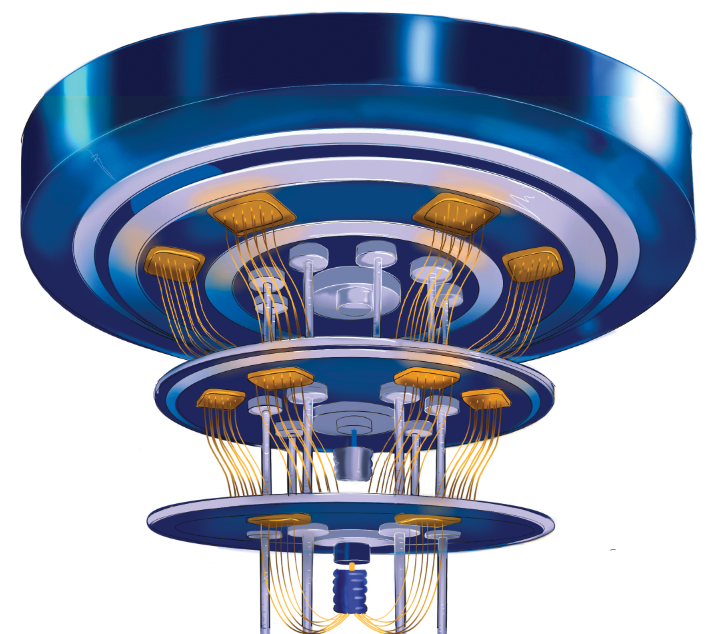A nonillion — 10 to the 30th power — is how many times faster a quantum computer can solve a computation compared to one of the fastest supercomputers in the world. In December 2024, Hartmut Neven, founder and lead of Google Quantum AI, introduced Willow, Google’s new quantum computing processing chip, which was the chip that performed this computation.
The technology that allowed Willow to achieve this feat is called quantum computing, which uses physics to solve problems beyond the ability of classic computers, according to International Business Machines.
Quantum computing has been more of a theory than reality, a concept explored by scientists and tech leaders. However, as companies cross the borders of what is possible, its impact is becoming real.
Nvidia, the leading chip maker in the world, just hosted its very first conference where one of the main topics discussed was the future of quantum computing.
In addition, the quantum computing company D-Wave — a company focused on the delivery of quantum computing systems, software and services — made a major breakthrough. According to D-Wave’s March 12 press release, D-Wave has just achieved quantum supremacy, which is when a quantum computer is superior to a classical computer on a specific task.
“We are now at the point where our current generation quantum computers are actually in production, helping customers as a part of their daily business operations,” Alan Baratz, CEO of D-Wave, said. “Beyond that, we’ve actually shown that there are important scientific problems that we can solve in minutes that would take millions of years to solve on classical computers.”
What Baratz was referring to is material simulation — something supposedly achieved by D-Wave systems. According to Cambridge University, in this context, simulation refers to studying the response of a modeled system to external forces and constraints. A basic example of material simulation is predicting how a bridge’s steel beams will behave under different temperatures and loads, which would allow engineers to optimize design before construction.
There are many practical uses for this breakthrough, which is accessible to companies through the cloud.
“These would be things like designer drugs, the one pill for you and all the things that are ailing you, or everlasting batteries, or very lightweight airplane frames,” Baratz said. “These are very, very hard computational problems.”
According to D-Wave’s fourth-quarter 2024 Investor Presentation, the problems that they solve are impossible for classical computers. First, the problems could take millions of years to solve. Second, a classical computer would take more than the world’s annual electricity consumption to solve them.
“One of the biggest issues is the power consumption required to train models and to do inference, and we think that quantum may be able to allow us to do that faster, better and with much less energy,” Baratz said.
With results like this, you would think that quantum computing for everyone is just around the corner. However, Jensen Huang, the CEO of Nvidia, theorized at the Consumer Electronics show, that quantum computing is around 15 to 30 years away from being “truly useful” to society and creating income for corporations.
Atom Computing, another company that builds quantum computers and lends services to the cloud, sees quantum computing being much closer than what Huang theorized.
“In order to get to economically valuable problems like we’re talking about, for us, that means getting two generations,” said Remy Notermans, director of strategic planning at Atom Computing. “A generation for us is about two to three years apart and for us, we think that [economically valuable problems] is within a window of about five years.”
As artificial intelligence models continue to become more complex, Baratz said quantum computing and graphic processing units will work side-by-side in pursuit of creating more powerful AI.
“I think AI and quantum are very synergistic,” Baratz said. “You might use AI to predict product demand or some product and then use quantum to optimize the supply chain to meet that demand.”
According to Bloomberg, Silicon Valley has historically been a tech center of the world receiving around 41% of all Venture Capitalist investment through 2019-2021.
But according to Baratz, the Bay Area has fallen behind in quantum computing.
Other regions like Australia, Canada and China are pulling ahead in innovating with the technology.
“I think the Bay Area is behind on quantum,” Baratz said. “I think that the state government should get its act together and figure out how to return the Bay Area to the great tech center that it was.”
Notermans says there is still more to discover and companies like Atom Computing want to show the world that quantum computing is more than just a mathematical trick.
“What we are interested in showing the world is that you can get this kind of advantage with quantum computing that isn’t a niche application nobody cares about, but instead outperforms the GPUs,” Notermans said.





